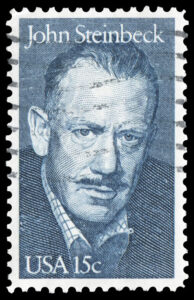Written by Haley Boyce

Oh, writing. Isn’t it funny to have a hobby that is so satisfying but also sometimes feels like torture? This is said in jest because, truly, the need to create is so innate we must do so lest we combust.
This is what it means to be an artist, what it feels like to have stories within that need to be told.
They are clawing their way out of our imaginations, laying themselves spread out on the page for all to see. Where the art of generating ideas is as easy as breathing or more painful than banging your head against a brick wall. There is no space in between.
There’s a method to this madness. A writing process, if you will. If you’re just starting out as a writer (as we all do at some point), there might be questions floating in your mind that are a little intimidating to ask. Where do I start? How do I do it? What is the process? The answers . . . are right here.
What Are the Steps of the Writing Process?
1. Brainstorm: This is, without a doubt, the easiest part of the writing process. All you need to do is let your mind play! If you’re writing some sort of fiction, you’re either writing in response to a prompt given to you by an instructor, one you came across online, or – the best feeling ever – your imagination sparked a story idea all on its own. Once you have that idea, write it down!
The worst thing you can do is convince yourself that you’ll remember the idea. Because you won’t. Write that stuff down, my friend.
Depending on your style of artistry, you might brainstorm by creating a mind map (circle, bubble, web, bridge, etc.), or listing your ideas as bullet points on a piece of paper or the notes app on your phone. Writing a paragraph as one of your main characters can help get you into the zone. Or maybe you’re someone who needs to get physical to get those creative juices flowing.
Aaron Sorkin, creator and writer of The West Wing and other primetime hits, has said that he has done some of his best brainstorming in the shower. Why? Because studies show that your mind is actually more creative when it’s relaxed or focused on doing something unrelated to your thought process.
Side note: Think of a brainstorm session with the exact imagery it conjures – it’s a storm. In your brain. Ideas are blowing every which way. Some of them are good enough to risk protecting. Some can be tossed out once the dust settles. It’s messy.
2. Outline: This is where you make sense of the productive mess you created while brainstorming. Plan your story out, chapter by chapter, or plot point by plot point. There are suggested formats for outlining, but some creative minds find formulaic outlines stifling. However, you might find that creating an outline as simple as writing a few sentences describing the main events that will happen in each chapter is sufficient. The goal here is to plan the big points in your story, knowing that every single part (sentence, paragraph, page, chapter) must work to move the story toward its ending. So, if you keep that in mind, how you outline your story is entirely up to you.
This works just as well if you’re writing nonfiction. When I was writing essays as a college undergrad, I found it helpful to draw rectangles representing each page of the essay I was planning. Then, on each rectangle, I would imagine what the essay would look like and the order of each paragraph. Sounds weird, but it got the job done. Nobody is grading your thought process. They only want the published draft to be stellar. So do what it takes and ignore what others say. The best thing you can do is what you find works best for you.
The only wrong thing you can do with an outline is skip it altogether.
Few Things are More Taunting than a Blinking Cursor on a Blank Page
 In our worst moments as writers, it can feel like we’re incapable of keeping up with our daydream. It’s what we call writer’s block. It can last an hour; it can last a year. It hurts. Thankfully, though, there are things we can do to chip away at the wall keeping us from telling the stories that need to be told. Here are five things to try during those moments when words evade us:
In our worst moments as writers, it can feel like we’re incapable of keeping up with our daydream. It’s what we call writer’s block. It can last an hour; it can last a year. It hurts. Thankfully, though, there are things we can do to chip away at the wall keeping us from telling the stories that need to be told. Here are five things to try during those moments when words evade us:
- Read. It’s true. Reading something totally in our wheelhouse or far out of our comfort zone can help inspire your own writing. Try to enjoy the book without an agenda (no craft analysis, thoughts of how you might do it differently, etc.). Go back to the time when you read without the brain of a writer. Don’t overthink it. Just read.
- Relax! Do some yoga. Get outside for a walk on the beach or through the park. Take a nap. Do something that will refocus your attention on the priorities of existence. Sometimes we can stunt our own thinking by trying too hard to come up with something to say.
- Go to an art gallery or museum. Be a patron of the arts. Writing is art, of course, but other mediums can inspire our words too. Look at a painting and make up a story about the subject. Every work of art is telling a story. Figure out what they are saying to you.
- Play make-believe with a kid. You know who uses their imagination without fear of judgment? Kiddos. Their minds are limitless because every possibility is still an option for their young lives. Hang out with a kid for an hour and see what wild worlds they take you too. Then try to be like them.
- Do the dishes. Clean the house. Pop in your AirPods, turn on some music, and let your mind wander while you wipe down the baseboards and put away the dishes. When you’re focused on a mindless task your imagination is under less pressure. Keep your notes app open and your phone nearby – you’re about to do some epic thinking.

3. First draft: Now, this is an entirely subjective statement, but it is for sure the hardest step in the writing process. Here, ideas grow arms and legs and become characters in the shape of simple and complex sentences. The ideas that were born in your brainstorm, that become solidified in your outline, are now fully fleshed out in your first draft. And it won’t be great. Fine at best, but certainly not something you’d turn into an instructor or publisher.
Allow yourself to make mistakes in your first draft. Often, writers can get caught up in the perfection of their craft, afraid to move onto the next sentence because the one they are on isn’t yet worthy of a Pulitzer. There’s a thick line between writing your first draft knowing it’s full of flaws and writing that same first draft thinking that it’s flawless.
Artistry as a writer involves a balance of attention to detail and grace for yourself during the first draft.
They say that the first draft is for you alone, the writer. It’s where you tell the story that you want to tell. If you don’t believe me, just ask these guys:
“Get it down. Take chances. It may be bad, but it’s the only way you can do anything really good.”
~ William Faulkner
“The first draft of anything is shit.”
~ Ernest Hemingway
“I would advise any beginning writer to write the first drafts as if no one else will ever read them—without a thought about publication -and only in the last draft to consider how the work will look from the outside.”
~ Anne Tyler
“The first draft reveals the art; revision reveals the artist.”
~ Michael Lee
“For me, it’s always been a process of trying to convince myself that what I’m doing in a first draft isn’t important. One way you get through the wall is by convincing yourself that it doesn’t matter. No one is ever going to see your first draft. Nobody cares about your first draft. And that’s the thing that you may be agonizing over, but honestly, whatever you’re doing can be fixed…For now, just get the words out. Get the story down however you can get it down, then fix it.”
~ Neil Gaiman
There are so many quotes to source for advice on the first draft and there’s a reason for it. It’s painful. Every writer wants to know, “How do I make writing the first draft less torturous?” Everyone gives their input and at the end of the day, we get through it. Then we workshop it and do it all over again.
Ask Any Writer Their Best Piece of Advice for Getting a Story Onto the Page and You’ll Hear Similar Messages Made in Various Ways
 Some will tell you to read, others will say guard yourself from the disillusion of waiting for inspiration. The point is, you’ve got to get words onto the page because the only way through it is to do it. Here is some sage advice from those who’ve done it before us.
Some will tell you to read, others will say guard yourself from the disillusion of waiting for inspiration. The point is, you’ve got to get words onto the page because the only way through it is to do it. Here is some sage advice from those who’ve done it before us.
“This is how you do it: you sit down at the keyboard and you put one word after another until it’s done. It’s that easy, and that hard.”
~ Neil Gaiman
“If you’re using dialogue, say it aloud as you write it. Only then will it have the sound of speech.”
~ John Steinbeck
“Protect the time and space in which you write. Keep everybody away from it, even the people who are most important to you.”
~ Zadie Smith
“Always carry a notebook. And I mean always. The short-term memory only retains information for three minutes; unless it is committed to paper you can lose an idea for ever.”
~ Will Self
“You can’t wait for inspiration, you have to go after it with a club.”
~ Jack London
“If you don’t have time to read, you don’t have the time — or the tools — to write. Simple as that.”
~ Stephen King
“Read, read, read. Read everything - trash, classics, good and bad, and see how they do it. Just like a carpenter who works as an apprentice and studies the master. Read! You'll absorb it. Then write. If it's good, you'll find out. If it's not, throw it out of the window.”
~ William Faulkner
“You have to get to a very quiet place inside yourself. And that doesn’t mean that you can’t have noise outside. I know some people who put jazz on, loudly, to write. I think each writer has her or his secret path to the muse.”
~ Maya Angelou
“When you’re stuck, and sure you’ve written absolute garbage, force yourself to finish and THEN decide to fix or scrap it - or you will never know if you can.”
~ Jodi Picoult
“You have to actually write. Daydreaming about the book you’re going to write someday isn’t writing. It’s daydreaming. Open your word processor and start writing.”
~ Andy Weir

4. Workshop: This is the fun part if you’ve got a good group of fellow writers and a thick skin. It is crucial that you find a group of writers (even just one other writer will do) rather than asking someone who is unfamiliar with the prompt and a stranger to the craft of writing. Keep in mind that just because someone likes to read books it doesn’t mean they can offer advice. A reader is someone who can consume your work and tell you that they liked it or disliked it, and why. A peer in a workshop, however, will read your story at least once, write notes in the margins about your sentence structure, line edits, analyze the word choice, and the artistic impact. They will ask why your character made a certain choice, tell you the symbolic meaning of something that you wrote without realizing how important it is to the plot.
A workshop is more powerful than asking your non-writer bestie to read it because it is made up of trained writers. They have a goal similar to yours, and just as they offer feedback on your piece, you reciprocate.
As a new(ish) writer it can feel like you’re supposed to change everything that someone offers in their feedback. Ignore that feeling to please your reader just because they said to change something. A workshop is meant to make observations and offer suggestions for rewrites. It is not an opportunity for someone to come along and chop out characters or fill plot holes with their own words. If they want to write a story with those suggestions, they can go ahead and do that on their own time. What they are here for is critique that shines a light on the good and offers suggestions for the places that need some work.
If you’re a people pleaser at all, now is the time to become discerning of the information that is helpful and the stuff that doesn’t fit with the vision you have for your story. Listen to your writerly friends but write with your heart.
5. “Final” draft: Please tell us you’re laughing as hard as I am over here. Whoever coined the term “final draft” is the biggest gaslighter ever. Why say something is final when we all know good and well that writing is never complete. There are only drafts that are good enough to go to print.
It’s been ingrained in us since elementary school that the last draft is the final draft, so for the sake of common terminology we’ll keep it. But know this: The last draft isn’t final. It’s just the one you can proudly share with an audience. You’ve ironed out the wrinkles, tied up loose ends, crossed all your T’s and dotted the I’s, and any other cliche you can think of that shows you have put in the work to transform what began as an idea into the full-bodied wonder of a story.
Editing is Always the Final, Final Step in Writing Anything Worth Reading
There’s a saying in the industry that goes like this: Kill your darlings. For your writing to be any good you’ve got to know what to cut.
Get rid of all the lines, words, pages, etc. that aren’t working to propel the plot. Kill those little darlings.
Because we’ve been looking at our pages longer than anyone else has, it’s sometimes hard to know what is superfluous and what stays. This is why workshops are so necessary. Someone else with an understanding of the craft and a fresh set of eyes can approach your story and see what needs to be cut – may it be a word or a character. Your attachment to them will be strong, your reaction to the suggestion might be ugly. Sometimes we write something that feels so good to the heart and sounds so good to the ear. But that’s not enough for it to justify placement in the piece. It’s got to go.
Imagine your story as a diamond in the rough. It already looks pretty cool, but it needs a great deal of work to let that baby sparkle. You have got to get it to the most clear and accurate depiction as possible. Before you start chipping away, here’s a checklist of things to look for while editing:
- Line edits: Does your sentence make sense the way it is? Can you say it in fewer words without losing the tone and meaning? Are your sentence lengths and rhythms varied enough to keep interest?
- Punctuation: Do you have periods at the end of statements, question marks at the end of questions, commas when there’s a pause? It sounds rudimentary, but you’d be surprised how often improper punctuation gets in the way of a good read.
- Subject-verb agreement and tenses: Do you maintain the correct subject-verb agreement throughout? Are you sure you haven’t accidentally changed tenses mid-sentence? It’s easy to make these mistakes. Check to be sure you haven’t missed any that need to be fixed.
- Names: This one might have you rolling your eyes right about now, but we cannot tell you how many times we’ve changed a character’s name midway through a first draft only to realize that it’s caused confusion midway through a final draft. It’s an easy fix if you’ve bungled that bit.
- Timeline accuracy: You’re an architect of imaginary worlds. So, when you’ve got a world that depends on the order of things, be sure it makes sense. Changes like this can be simple to fix by changing a date. It could also be a painful task if you haven’t outlined thoroughly enough in the beginning stages, so be careful.
- Factual accuracy: This matters in all books, but especially in historical fiction. If you mention anything real, it must be true. There are times to take artistic liberties, but they must be believable. And if you do it too often, you will lose your audience. Trust: There are people who take great pleasure in proving your work invalid. If you want to include a location, be sure to describe it with accuracy. If you want to include an era, everything from clothing to cars to war zones must be true.




